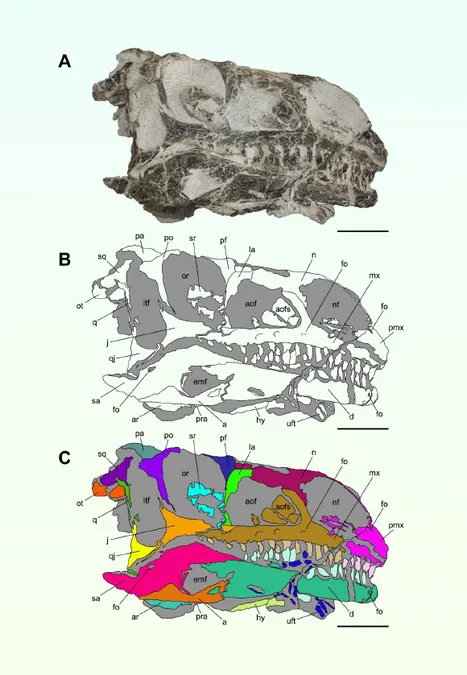
Unveiling the Past: New Sauropodomorph Dinosaur Fossil Discovered in Switzerland!
2025-07-21
Author: Jia
A Groundbreaking Discovery in the Heart of Europe
Paleontologists have made an exciting breakthrough with the discovery of a brand-new, unnamed species of massopodan sauropodomorph dinosaur in the Klettgau Formation, nestled in Canton Aargau, Switzerland.
A Journey Back in Time
Dating back to the Norian age of the Late Triassic epoch—roughly 206 million years ago—this fossil represents a previously unidentified member of the Massopoda group, which includes some of the most iconic dinosaurs in history.
The Rise of the Sauropodomorpha
According to Dr. Alessandro Lania from the Rheinische Friedrich-Wilhelms-Universität Bonn, Sauropodomorpha is one of the most successful dinosaur clades. These massive herbivores thrived from the Late Triassic through the Late Cretaceous, occupying diverse environments from Antarctica to Greenland.
From Small to Giant: The Evolutionary Leap
The early history of sauropodomorphs reveals a rapid diversification over just 30 million years. They evolved from small, bipedal, carnivorous ancestors to the larger, quadrupedal giants we are familiar with today.
Rich Geological Heritage
The new fossil was unearthed from the upper strata of the Gruhalde Member in the Gruhalde Quarry, an area known for its extensive Late Triassic geological formations. This region showcases a fascinating array of sediments that tell the story of ancient environments.
A Unique Find in Aargau
Notably, this massopodan sauropodomorph is the first non-Plateosaurus example documented in Canton Aargau and the fourth Late Triassic non-sauropodan sauropodomorph found in Switzerland, marking a significant addition to paleontological records.
Revealing Intriguing Anatomical Insights
The detailed investigation of the fossil's anatomy has unveiled a unique craniomandibular structure that shares features with both non-massopodan plateosaurians and massopodan sauropodomorphs.
European Roots for Future Giants?
This discovery hints at a possible European origin for Early Jurassic massopodans that migrated from Asia during the Late Triassic, sparking tantalizing theories about dinosaur evolution.
Published Findings
For those intrigued by this remarkable find, the team's research was published this month in the Swiss Journal of Palaeontology, shedding light on the intricate web of prehistoric life that once flourished in our world.


 Brasil (PT)
Brasil (PT)
 Canada (EN)
Canada (EN)
 Chile (ES)
Chile (ES)
 Česko (CS)
Česko (CS)
 대한민국 (KO)
대한민국 (KO)
 España (ES)
España (ES)
 France (FR)
France (FR)
 Hong Kong (EN)
Hong Kong (EN)
 Italia (IT)
Italia (IT)
 日本 (JA)
日本 (JA)
 Magyarország (HU)
Magyarország (HU)
 Norge (NO)
Norge (NO)
 Polska (PL)
Polska (PL)
 Schweiz (DE)
Schweiz (DE)
 Singapore (EN)
Singapore (EN)
 Sverige (SV)
Sverige (SV)
 Suomi (FI)
Suomi (FI)
 Türkiye (TR)
Türkiye (TR)
 الإمارات العربية المتحدة (AR)
الإمارات العربية المتحدة (AR)